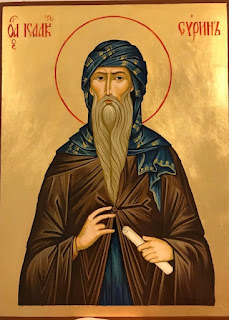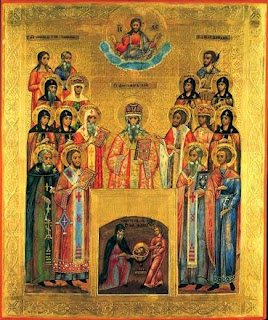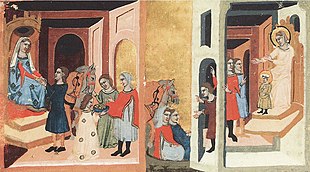
The Trinity's existence is challenged today by heretics who seek to blasphemy the One Holy God, some of them even call it a teaching of three gods because they are so filled with hatred for the Trinity. They assert it is a philosophical position derived at only from philosophical speculations. That is not true. Trinitarians have used language that is not directly taken from the Scriptures to explain the doctrine to the bewildered and as tools to help explain the doctrine, but the core principle of the doctrine is there all the same. The Modalist, ironically, tells us that his doctrine is without philosophical speculation, but this will be shown to be entirely fallacious. His doctrine requires more philosophical speculation than Trinitarian theology. The core of Trinitarian teaching is that there is one God. The Father is God, the Son is God, and the Holy Spirit is God. The Father is not the Son, the Son is not the Holy Spirit, and the Holy Spirit is not the Father. They are wholly, infinitely God, in a way that our human minds cannot fully comprehend. Any attack made on the Trinity that is "three god" worship is subsequently anti-Christian behavior for it bears false witness. Any anti-Trinitarian claiming to be a Christian who makes this claim has already exposed himself as a non-Christian for a Christian would never make a lying claim about someone, regardless as to how mistaken he thinks they are.
The Trinity is progressively revealed in the context of Scripture. We see first intimation that there exists a Divine plurality in the Oneness and Infiniteness of God in Genesis 1 when God speaks, "let Us make man in Our image". The heretics usually try and explain that God is either using the royal "we" which would be the first and only time in Scriptures that such a royal we is used, or that He is consulting with His myriad of angels. If He is consulting with His myriad of angels though, then angels have become involved in the creation narrative. There may be other times in the book of Genesis where such an interpretation may withhold in the context, but in the creation narrative of Genesis, it does not. God's plurality is intimated.
In Genesis 18-19, we see three men, in the appearance of angels, come to visit Abraham. These three men are traditionally held up to be the Trinity itself. Abraham addresses them as "My Lord! (Adonai)" In Scriptures, Adonai, was instructed to be read out in replacement of the Divine Name, the Tetragrammaton, which is typically spelled out "Yahweh" or "Jehovah" or even "YHWH". It is confirmed that at least one of these angels was YHWH when the narrative speaks of the LORD raining fire from LORD in Heaven. It is difficult for an anti-Trinitarian to flippantly dismiss this evidence.
We see that the Son and the Father are distinct in the Messianic texts of Psalm 2 where it is spoken of the enemies of God coming against the LORD and His anointed. King David is speaking prophetically of the Messiah, not of Himself. Then in Psalm 110, King David speaks of the LORD who said to his Lord, sit down on my right hand. This is conversation between two beings, regardless as to whether one takes the term "right hand" metaphorically" as the Modalists do. Not to mention Psalm 45, speaks of God having a conversation with God. Anti-Trinitarians force this text to apply to Solomon, ignoring that the core of the text is subsequently again applied to the Messiah in Hebrews 1. Daniel 7, a Messianic text, also shows a man coming on the clouds, ascending to the Ancient of Days. This is a reference to the Messianic judgment. We see two, not one.
The evidence that the Father and the Son are not each other is so overwhelming, it is remarkable that the Modalists would be so pigheaded to continue in their insistence that they are the same being when clearly, the Scriptures have revealed they are no. In Matthew 3, the Holy Spirit descends from Heaven and a voice speaks saying "This is my Son." Either Jesus is a ventriloquist or Jesus is lying, or the Father is not the Son. Whether or not this text contains the full revelation of the Trinity is once again irrelevant. It shows clearly the Father is not the Son. Likewise does the Transfiguration narrative in Matthew 17 and Luke 9. You would have to believe in an egregiously duplicitous God to assert that Modalism is what God intended to communicate in either of these texts. Not to mention in John 8, Jesus asserts that the Father is one witness and Himself is another witness because the testimony of two witnesses is true. In Revelation 3, Jesus references that He has a God, which is problematic for Modalists, but not for Trinitarians who understand that the Person of God the Father is Jesus's God, which is possible because they are not each other. Revelation 4-5 also shows clearly that the three, the Father, the Son, and the Holy Spirit, are not each other. The final greetings in 2 Corinthians 13 show also that the Father, the Son, and the Holy Spirit are distinct.
John 1 proves definitively that Jesus is God. The Word was God and the Word was with God and the Word became flesh. Socinians are dubious in that they insist Jesus was the Word Who became flesh but not the Word Who was God. Are there two Words that are being talked about in the Johannine prologue? No. John 8:58 shows that Jesus claims to be God. The Arian response is that Jesus was only asserting that He existed before Abraham which is not in continuity with the Greek grammar. The Greek grammar does not use the past-tense. Jesus is essentially saying, "Before Abraham was, I exist". That is a claim not to be taken lightly. In Philippians 2, Jesus enters into God's glory, a glory which God does not share with another. It is not problematic for a Trinitarian, because when the three are together, They can speak as a single "I" or as a "We" as in Genesis 1. Revelation 3 also shows Jesus claiming to be the arche of God's creation. Though Arians insist that this holds Jesus as the first of God's creations, this interpretation is mistaken for the Greek word arche initially used by Aristotle to refer to his prime mover, indicates not so much as the first but a beginning in the sense of an origination. Jesus is the beginning of God's creation in the sense that He is the origination. If we understand beginning as the Greek word arche is intended to use, then Jesus is calling Himself not the first creation but the prime mover of God's creation. Jesus also references Himself as Alpha and Omega, which is what God references Himself as.
The Holy Spirit is God as the Great Commission indicates in Matthew 28. Why would Jesus include the Holy Spirit under the baptismal formula if it was not an equal authority with the Father and the Son? Acts 5 also details the account of Ananias and Saphira who lied to the Holy Spirit and by doing so, lied to God. A blasphemy against the Holy Spirit is the unforgivable sin. How can it be unforgivable to blaspheme something that is not God but is an active force?
Objections to the Trinity are numerous but cannot withstand scrutiny. Further, the objections do not provide a same level of solution to Christian monotheism as the Trinity does. The attackers of the Trinity are so numerous and diverse, we cannot really address them all other than to say that the facts that the heretics and the enemies of God cannot agree on which alternative Trinity to uphold shows that there is nothing that can be held as an alternative to God. Let God arise and let His enemies be scattered! Glory to the Father, and to the Son, and to the Holy Spirit, now and unto the ages of ages, Amen!





















